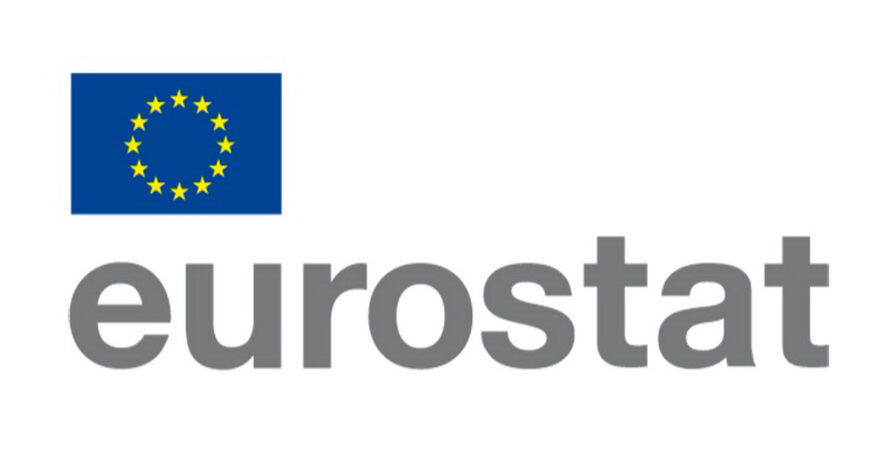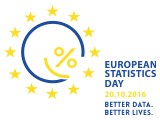| Category: | Economic statistics |
| Area: | External trade |
| Survey / data collection: | External trade statistics |
| MONSTAT metadata |
|---|
| Reference metadata |
| 1. Contact |
| 2. Metadata update |
| 3. Statistical presentation |
| 4. Unit of measure |
| 5. Reference period |
| 6. Institutional mandate |
| 7. Confidentiality |
| 8. Release policy |
| 9. Frequency of dissemination |
| 10. Accessibility and clarity |
| 11. Quality management |
| 12. Relevance |
| 13. Accuracy and reliability |
| 14. Timeliness and punctuality |
| 15. Coherence and Comparability |
| 17. Data revision |
| 18. Statistical processing |
| 19. Comment |
Note: For any question on metadata, please contact MONSTAT metadata support.
| 1. Contact Vrh | |
| 1.1. Contact organization: | Statistical Office of Montenegro - MONSTAT |
| 1.2. Contact organization unit: | Department of price statistics and external trade statistics |
| 1.2. Contact organization unit: | IV Proleterske 2, 81000 Podgorica, Montenegro |
| 2. Metadata update Top | |
| 2.1. Metadata last certified: | |
| 2.2. Metadata last posted: | 29 December 2023 |
| 2.3. Metadata last update: | December 2023 |
| 3. Statistical presentation Top | |
| 3.1. Data description: | Foreign trade statistics is the oldest achieving economic statistics. It is an important source of data for the national accounts, balance of payments statistics, and short-term economic analysis. It is very important to monitor the competitiveness of the country or certain regions in order to successfully driven economic policies, trade negotiations, preparation and monitoring as well as in the implementation of trade agreements. Thereunder shall be determined: general economic policy, trade policy development, market analysis for exporters and importers, in order to define their commercial strategy, determining the material balance of strategic products, in order to control the market in the field of agriculture and energy, etc. Foreign trade statistics include all goods originating from domestic production or from internal trade in goods, including the so-called nationalized goods (goods which were imported and cleared, and then in the same state exported to the world market as a commodity of our origin). External Trade Statistics is tasked to process and publish data on trade with foreign countries. Looking at the terms of the domestic and global economies provide different information, however important to the economy of a country. From the standpoint of the national economy, they contain information on hiring, or increase financial resources based on the export or import of goods. From the aspect of the world economy, these data indicate the participation of our country in the international division of labor. |
| 3.2. Classification system: | To identify a large number of different products and commodities used the following classifications: Combined Nomenclature, Harmonized System and encryption products, Standard International Trade Classification Classification rev.4, and Classification by Broad economic activities 3th edition. |
| 3.3. Sector coverage: | |
| 3.4. Statistical concepts and definitions: | Single administrative document is a document by which the person requires goods to be placed in some of the customs procedures in a manner and form prescribed. It contains a set of 8 sheets. The customs tariff is systematically review goods by sub-headings, headings and titles (appointment) of goods. Under the customs procedure entails putting the goods into free circulation, the transit of goods under the customs warehousing procedure in breeding MNE (inward), the procedure for processing under customs control, temporary importation, inward processing procedure outside the MNE (outward processing). It is expressed as a four-digit code where the first two-digit code signifies declared (required) customs procedures, while the other two-digit code indicates the previous procedure, procedure in which the goods have been declared before, if it were not enrolled 00 (two zeros). |
| 3.5. Statistical unit: | The observation unit in the statistics of foreign trade is each delivery of goods done through export and import goods. |
| 3.6. Statistical population: | Foreign trade statistics includes all goods exported from Montenegro, goods imported from abroad and released into free circulation. Is included under the export goods leaving the statistical territory of Montenegro in accordance with the following customs procedures: export, outward processing and re-export of which was the inward processing and processing under customs supervision. Under the import includes all goods entering the statistical territory of Montenegro in accordance with the following customs procedures: import for free circulation, inward processing, processing and re-import of goods under customs supervision. |
| 3.7. Reference area: | Montenegro |
| 3.8. Time coverage: | Data is available since 2005. |
| 3.9. Base period: | The base period for the index in the previous year. |
| 4. Unit of measure Top | |
| The value of foreign trade is presented in Euro, the net mass and quantity in the supplementary unit, which is defined in the Customs Tariff (for example: m2, liters, pieces, etc.), the unit of measure in the statistics of foreign trade. | |
| 5. Reference period Top | |
| Reference period in the foreign trade statistics is the calendar month. Time of observation is considered when the export or import is done at the moment of customs duty, when the goods pass through customs border. Annual or cumulative data shown are formed by aggregating the monthly data. | |
| 6. Institutional mandate Top | |
| 6.1. Legal acts and other agreements: | The Law on Official Statistics and Official Statistical System (Official Gazette of Montenegro No 18/12 and 47/19) defines provisions for collection, processing, and dissemination of data. The Law provides to the Statistical Office legal powers to collect and access the data necessary for the implementation of Programme and Annual Plan. The Law gives a priority to the use of administrative data and right of access to individual data that are a result of survey of other official statistical producers. As an annex to legal provisions, Statistical Office has signed several memoranda on cooperation with administrative data providers. |
| 6.2. Data sharing: | Signed agreement on cooperation with the official statistical producers: 1. Revenue and Customs Administration 2. Tax Administration 3. Ministry of Finance 4. Central Bank of Montenegro 5. Trilateral agreement (MONSTAT, Ministry of Finance, and Central Bank of Montenegro) International institutions: 1. EUROSTAT 2. UN organizations 3. IMF 4. World Bank |
| 7. Confidentiality Top | |
| 7.1. Confidentiality - policy: | Articles 53-60 of the Law on Official Statistics and Official Statistical System (Official Gazette of Montenegro No 18/12 and 47/19) provide a framework for protection, use, and transmission of confidential data. Statistical office has produced two comprehensive rulebooks that cover the procedures for individual data protection as well as keeping individual records. With purpose of the meeting legal framework on functioning of security system and statistical confidentiality there was adopted the Rulebook on Keeping Statistical Data by which Manner, Time, Technical Conditions and Organization of Statistical Data Storage to Prevent Their Destroying, Misappropriation, and Unauthorized Use is Regulated as well as the Rulebook on Contents and Manner of Keeping Records on Users of Individual Statistical Data by which contents and manner of keeping records on users of individual statistical data is regular. Pursuant to the Article 59, an access to the confidential data is limited to persons performing duties and tasks of official statistical producer and up to the stage the data are necessary for official statistical production. Persons that performs duties and tasks within official statistical producers must sign the statement on respecting the principle of confidentiality. Law on Official Statistics and Official Statistical System is aligned with the Regulation No 223/2009 and the Regulation (EU) 2015/759 from 29 April 2015 that also regulate confidentiality provisions. The Government of Montenegro adopted the Statement on Commitment of Confidence in Official Statistics (Commitment of Confidence). |
| 7.2. Confidentiality - data treatment: | Confidentiality of data for external trade statistics is guaranteed by the official statistics of Montenegro. Data is confidential when allows direct or indirect identification of companies. In the foreign trade statistics there are two types of confidentiality, active and passive. Active confidentiality is the case where statistical offices themselves take the initiative to protect the data, either because of state or government interests of individual subjects. Passive confidentiality is the case where we have state authorities or importers/exporters require statistical authorities not to publish information that could cause harm to themselves or state interests. |
| 8. Release policy Top | |
| 8.1. Release calendar: | The Law on Official Statistics and Official Statistical System (Official Gazette of Montenegro No 18/12) stipulates that official statistical producers prepare, update, and publish Statistical Release Calendar. It is published on the website of Statistical Office not later than 20 December for the next year, for all official statistical producers that includes date of releasing statistical data. Any change in date of releasing in the Calendar is published in advance in accordance with the Procedure on Unplanned Revisions. |
| 8.2. Release calendar - access: | http://www.monstat.org/eng/page.php?id=12&pageid=12 |
| 8.3. User access: | General aim of official statistical producer is to meet the needs of users, and to make an access to statistical data to users in an understandable manner, simultaneously and under the same conditions. Statistical Office is obliged to produce and disseminate official statistics in objective, transparent and professional manner, so that all users are equally treated. |
| 9. Frequency of dissemination Top | |
| Frequency of data dissemination is monthly and yearly. | |
| 10. Accessibility and clarity Top | |
| 10.1. News release: | Publications containing information on foreign trade statistics are monthly release (Montenegro foreign trade of goods) and the annual release (Montenegro foreign trade of goods). |
| 10.2. Publications: | Statistical Office publishes the following regular publications: 1. Statistical Yearbook, 2. Montenegro in figures, 3. Monthly statistical review. In addition to the above regular ones, Statistical Office publishes also additionally publications. Some of the most important additional publications are as it follows: 1. Women and Men in Montenegro, 2. The most often used statistical data All publication published by Statistical Office are available at the following link: http://monstat.org/eng/publikacije.php |
| 10.3. Online database: | Data on foreign trade in goods of Montenegro, imports/exports, can be found in the dissemination databases located on the website of the Administration for Statistics of Montenegro: * Annual foreign trade commodity exchange data; dissemination base-Link?Data-https://www.monstat.org/cg/page.php?id=171&pageid * Monthly foreign trade commodity exchange data; dissemination base-https://www.monstat.org/cg/page.php?id=172&pageid=172 The dissemination databases contain data on the import/export of goods, on a monthly and annual level, according to all countries in accordance with the Combined Nomenclature and the Standard International Trade Classification, at the level of two and four digits. |
| 10.4. Micro-data access: | The Law on Official Statistics and Official Statistical System (Official Gazette of Montenegro No 18/12) regulates rules under which external users can obtain an access to individual data for needs of research. Article 58 defines types of scientific and research organizations that can obtain such data. Providing individual data without identifier is possible only upon a written request of scientific and research institutions, with purpose of performing scientific and research activities as well as international statistical organizations and statistical producers from other countries. Research entity signs the agreement with Statistical Office, and it signs the statement on respecting the confidentiality principle. Official statistical producers keeps a separate records on users and purpose of using the statistical data given to these users. |
| 10.5. Other: | Mirror analysis of foreign trade of goods of Montenegro. |
| 10.6. Documentation on methodology: domain: | Monthly release, Monthly Statistical Review, and Statistical Yearbook contain a brief methodology on the basis of data that are produced. Production data of foreign trade based on the recommendations of the UN and EU statistics contained in the following manuals: International Merchandise Trade Statistics, Concept and Definitions, United Nations, Statistics on the Trade of Goods, User Guide, and Eurostat. |
| 10.7. Quality documentation: | The Law on Official Statistics and the Official Statistical System ("Official Gazette of Montenegro" No. 18/12 and 47/19) defines the commitment to quality, which ensures that producers of official statistics in Montenegro work and cooperate in accordance with international principles of quality of the statistical system. In accordance with the ESS Quality Declaration, Article 338 of the Treaty on the Functioning of the EU, Regulations 759/2015 and 223/2009 and the European Statistics Code of Practice, the following documents are adopted: 1. Quality Strategy of the Statistical Office 2. Guide for the implementation of the Quality Strategy in the Statistical Office; 3. Implementation plan |
| 11. Quality management Top | |
| 11.1. Quality assurance: | Statistical Office has chosen the implementation of elements of TQM (Total Quality Management) model that foster development and improvement of functioning of: - Institution, - Official statistical result production, and - Individual. Within middle-term deadline, Statistical Office has chosen the TQM implementation through the following objectives: 1. Strong commitment to users and other interested parties, 2. Quality statistical processes and products, 3. Professional orientation of staff members, 4. Constant improvements, 5. Reduction of overburden of reporting units. |
| 11.2. Quality assesment: | One of the criteria for the quality control of external trade data is through the mirror analysis with other countries. Mirror (comparative) analysis is an analysis of foreign trade data between the two countries or group of countries for a period of time. In September 2011, the mirror analysis was made with EU member states and countries of the Western Balkans. The analysis noticed small discrepancies in some countries, and the reasons that lead to discrepancies in the data. At regular workshops organized for the Western Balkans, the experts presented data quality. Results of these analyzes indicate good quality data of foreign trade of Montenegro. |
| 12. Relevance Top | |
| 12.1. User needs: | International users: - Eurostat, - World Bank, - UN organizations, - International Monetary Fund National users: - Ministries and other public administration bodies, -Local government, and -Other local government bodies. - Central bank, - Non-governmental organizations, - Students, -Researchers, - Media. |
| 12.2. User satisfaction: | The Statistical Office has adopted the Quality Management Strategy, the Guidebook to the Implementation of the Quality Management Strategy, as well as the Plan for the Implementation of the Quality Policy. In order to measure the degree to which fulfills obligations towards users and within the new quality policy, the Statistical Office conducted User satisfaction survey. The results of the survey are available on the Statistical Office website, link: http://monstat.org/uploads/files/2.%20Izvjestaj%20o%20zadovoljstvu%20korisnika%20ENG%20(Autosaved).pdf |
| 12.3. Completeness: | |
| 13. Accuracy and reliability Top | |
| 13.1. Overall accuracy: | |
| 13.2. Sampling error: | |
| 13.3. Non-sampling error: | |
| 14. Timeliness and punctuality Top | |
| 14.1. Timeliness: | Monthly releases are published on the end of the month for the previous period, so that the time between the availability of data and events described is less then month. For annual releases preliminary data published on the ned of January and the final on middle of April. |
| 14.2. Punctuality: | There is no time-lag between the actual delivery of the data and the target date. All press releases are published in accordance with the scheduled publication date. |
| 15. Coherence and Comparability Top | |
| 15.1. Comparability - geographical: | Geographical comparability of external trade statistics may be influenced by different definitions and concepts used by the country in the process of collecting data. There may be differences in the methods used by some countries in terms of coverage, the partner, and the transaction value. In Montenegro is in use the special trade system, which makes data comparable with the data members of the European Union because their external trade statistics are based in this system, while for example USA, Japan or Canada apply general trade system and our data cannot be compared with these countries because of the use of different trading systems. |
| 15.2. Comparability over time: | During the time there are happening different changes, for example, in classification, definition, concepts and it can lead to a incomparability of data. Because of that in the Department of Foreign Trade there are ordinary and extraordinary revisions of data. Ordinary revisions are executed every month. Data is comparable from 2005, since the beginning of their processing by Monstat. |
| 15.3. Coherence - cross domain: | Department of External Trade Statistics of goods is the only authorized disseminator of foreign trade data, so that there are no other sources or statistical domain by which to adapt common. |
| 15.4. Coherence - internal: |
| 17. Data revision Top | |
| 17.1. Data revision - policy: | Statistical Office has adopted the revision policy and it is available on the website http://www.monstat.org/eng/page.php?id=1411&pageid=1411 |
| 17.2. Data revision - practice: | Each month, routine revision of data is executed. Reviewed data is related to the current year. Monthly data obtained from the Revenue and customs administration include data from the beginning of the year until the last month of the current year as the cumulative data. For example: in May Monstat receive data as cumulative from January to April. Despite the fact that some customs declaration already filled in the customs procedure correction of already submitted declarations is usually, which is one of the reasons for the revision of the data. When it comes to correcting certain declarations, Revenue and Customs along with other monthly data and submits the amended declaration. One of the reasons for the revision of the data are new customs declarations received in the last month, and some refer to the previous month. In order to process the declaration it must be reviewed for the previous month and classify such a declaration in the month/s when it was external trade exchange. On some customs declarations (SAD) be made and administrative proceedings that could last a few months and after that is done submitting the customs declaration, and there are new declarations pertaining to the previous month, which is also another reason for the revision of the data. In addition to routine revision data, special revision data are also performed. There are no defined rules when it will make a special revision data. Special revisions are carried out in cases where there is a substantial change in the use of basic methodologies for data processing, and which affect the impossibility of comparison data. A revision of this type was made in September 2010, and the revised data for the period 2005 to 2009. The reason for the audit compliance with the applicable EU standards. The data are processed by a special trade system, the import data are recorded on the basis of the country of origin. The difference in the data is due to changes in the trading system, the updated database for the period audited as well as record imports by country of origin. In this way, the data from 2005 onwards are fully comparable. |
| 18. Statistical processing Top | |
| 18.1. Source data: | Source data for the statistics of foreign trade is Single administrative document (SAD) on export and import goods. SAD is provided by Revenue and Customs Administration, is a document that is submitted to the customs procedure. It contains information that is important for the clearance procedure and data for statistical purposes as well as other users. |
| 18.2. Frequency of data collection: | Data are collected on a daily base by the Ravenue and Customs Administration of Montenegro. |
| 18.3. Data collection: | The Revenue and Customs Administration shall submit monthly data Monstat. Data given refer to all previous months of the beginning of the year. |
| 18.6. Adjustment: | The most commonly used procedure for adjusting data refers to values below the statistical threshold. Several countries, in accordance with their methodologies, do not calculate values of less than 1000 kg or 1000 euros in foreign trade. Since Montenegro is a small economy, it calculates all values, so there is no need to adjust the data. Seasonal adjustment methods, time series decomposition or other similar methods are not in use. |
| 19. Comment Top | |







